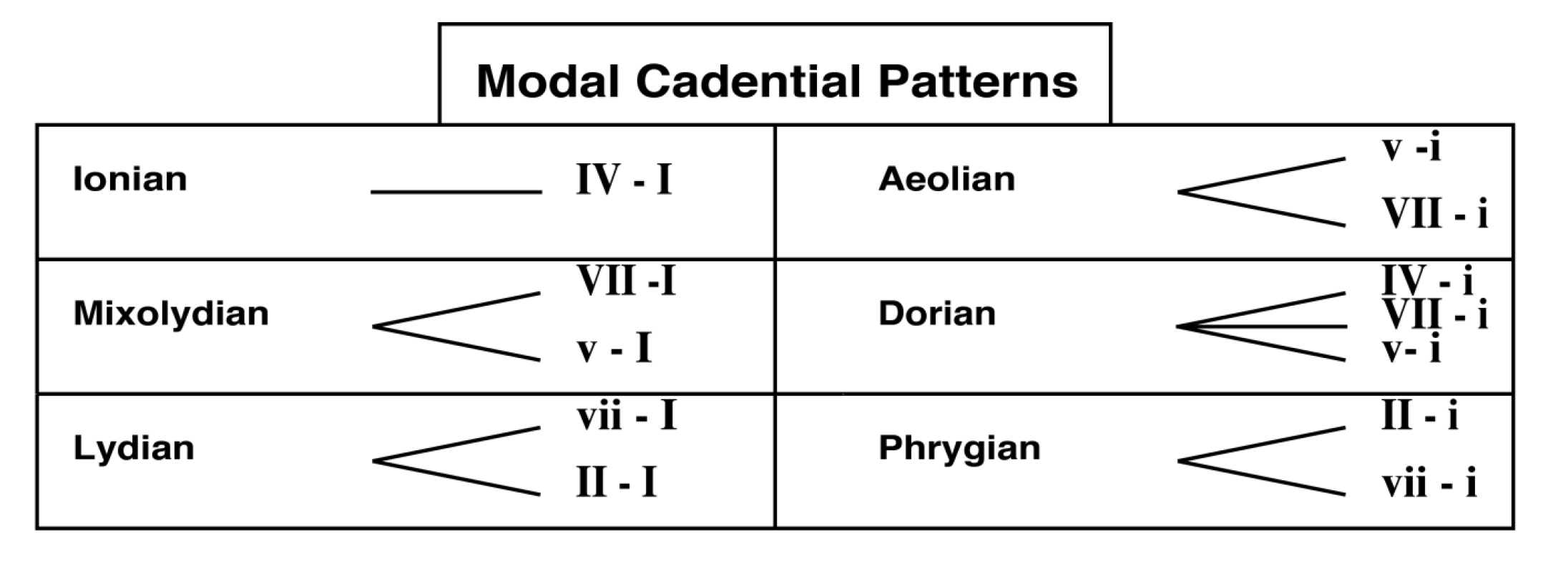33 Modal Music
The Ionian, Dorian, Phrygian, Lydian, Mixolydian, and Aeolian modes were formed over many centuries by gradually incorporating ti and fa half steps into the pentatonic scale. These seven-note scales, or modes, appear in music of the Middle Ages and Renaissance era based on theoretical concepts that can be traced back to the ancient Greeks. The modes gradually crystallized into the major and minor tonal system of the Common Practice Period (1600-1900).
A large amount of folk music is written in modes. In the late 19th and early 20th century, composers revived the use of modality (neo-modality) as an alternative to the major/minor system.
The modal scales
Ionian (Major)
Syllables: do scale
Dorian (Natural minor with ![]() 6)
6)
Syllables: re scale or do-minor scale + la
Phrygian (Natural minor with ![]() 2)
2)
Syllables: mi scale or do-minor scale + ra
Lydian (Major with ![]() 4)
4)
Syllables: fa scale or do scale + fi
Mixolydian (Major with ![]() 7)
7)
Syllables: so scale or do scale + te
Aeolian (Natural minor)
Syllables: la scale or do-minor scale
Locrian (Phrygian with ![]() 5)
5)
Syllables: ti scale or do-minor scale + ra and se
Practice 1
Diatonic Triads in the Seven Modes
Ionian
Dorian
Phrygian
Lydian
Mixolydian
Aeolian
Locrian
Basic Concepts of Modality
| Major Types | Natural Minor Types | ||
| Ionian | Major | Aeolian | Natural minor |
| Mixolydian | Major with |
Dorian | Natural minor with |
| Lydian | Major with |
Phrygian | Natural minor with |
| Locrian * | Phrygian with |
* Rarely used in traditional styles
The modal flavor in melodic or harmonic writing is most apparent when the modal scale degrees are emphasized. Modal cadences utilize chords that contain these characteristic scale degrees.
Modal root movements are the opposite of the falling 5th, falling 3rd, and rising 2nd root movements of the major/minor tonalities. In modal music, dominant-tonic resolutions and chromaticism are avoided.
A comparison of characteristic root progressions in tonal and modal music:

Tonal compositions employ tonal root movements and cadences, and modal compositions employ modal root movements and cadences. Many tonal compositions have excursions into modality, and vice versa.

Practice 2